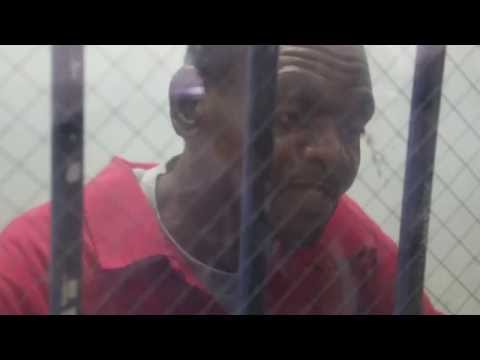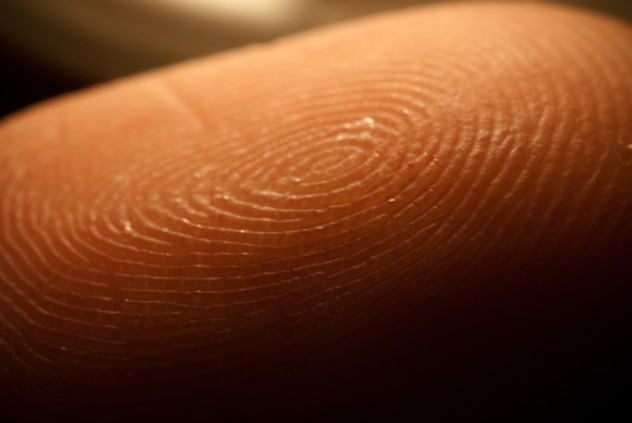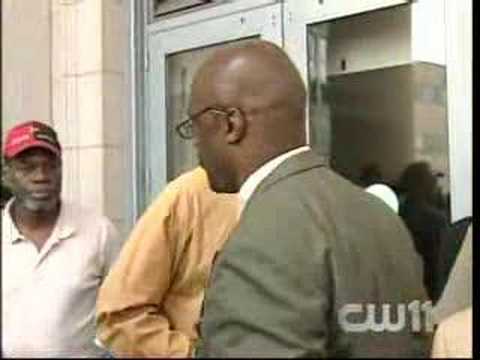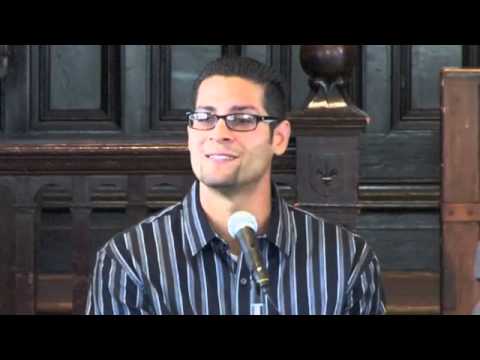10Anthony Caravella
When Anthony Caravella was arrested in late December 1983, he knew he was in trouble. After all, he had failed to appear in Florida juvenile court over charges of stealing a bicycle. But he certainly wasn’t expecting to be questioned about the two-month-old rape and murder of Ada Jankowski. Caravella, a 15-year-old with an IQ of 67, eventually gave four different confessions, which conflicted with each other as well as the crime. For example, he initially admitted to killing Jankowski by hitting her over the head with a bottle. She had actually been stabbed 29 times. He repeatedly called Jankowski a “girl” when she was actually 58, and said that she was taller than him, when she was almost 30 centimeters (12 in) shorter. His lawyers now allege that police officers pressured Caravella into confessing, then gradually fed him details of the crime until his statements became plausible. Although there was no physical evidence, the teenager was given a life sentence in 1984. In 2001, prosecutors agreed to DNA test the physical evidence from the crime, but the results were inconclusive. Years later, in 2009, the evidence was sent to California DNA expert Edward Blake. Dr. Blake was able to do what the local lab couldn’t and isolate a sperm sample from the rape kit. Caravella was soon ruled out as the source. Caravella was provisionally released from prison in 2009, after serving 26 years. Further tests resulted in his official exoneration in 2010. In 2013, a jury found that two former police officers had framed Caravella and ordered them to pay $7 million in compensation. A federal appeals court confirmed the verdict in 2015.
9Jeff Deskovic
It didn’t take much for Jeff Deskovic to become a suspect in the rape and murder of a classmate in 1989. The 16-year-old first came to police attention because he was late to school on the day after the murder. The authorities also thought it was suspicious that he visited the victim’s wake three times, appearing “overly distraught.” When the police spoke to Deskovic, the teenager told them that he had begun his own amateur investigation and offered to give them a list of potential suspects. In January 1990, the police asked Deskovic to take a polygraph test. He agreed, believing that the test would simply clear him so that he could help the police as a sort of junior investigator. The exam took place at the private polygraph business run by a local sheriff’s deputy. Deskovic was kept in a small room all day and given frequent cups of coffee, but no food. Detectives interrogated him between polygraph sessions. After six hours, the detectives accused Deskovic of failing the polygraph test and advised him to confess. This apparently triggered a breakdown, with Deskovic sobbing uncontrollably and curled up in a ball underneath the table. He subsequently made a full confession, mostly in the third person. DNA testing then found that Deskovic wasn’t the source of semen recovered from the body. But he was prosecuted anyway, with his confession as the key evidence. He was found guilty of rape and murder in 1991. The prosecution had argued that the semen could have come from a consensual partner, so it didn’t matter that it wasn’t from Deskovic. However, almost exactly 15 years later, the semen was retested and the results entered into a DNA databank of convicted felons. It was a match for a man named Steven Cunningham, who was in prison for a similar murder. When confronted with the evidence, Cunningham confessed to the earlier murder as well. Deskovic was released shortly afterward. For his wrongful imprisonment, Deskovic received over $13 million from New York state, Westchester County, and Peekskill. In a civil rights lawsuit against Putnam County, a federal jury awarded him $41 million more.
8Henry Lee McCollum And Leon Brown
In 1983, an 11-year-old girl was found raped and murdered in the small town of Red Springs, North Carolina. The police had no leads, but a local youth suggested that the culprits might have been half brothers Henry McCollum and Leon Brown. The teenage brothers were both mentally disabled and had recently moved to Red Springs from New Jersey with their mother. After five hours of questioning, McCollum signed a confession in the belief that he would be allowed to go home if he did. The police then told the 15-year-old Brown that his brother had confessed and implicated him; they urged him to confess as well to avoid the death penalty. He did. McCollum and Brown both quickly renounced their confessions, but they were still convicted and sentenced to death. Brown’s sentence was later downgraded to life in prison, but McCollum remained on death row. The US Supreme Court declined to review the case in 1994. Three decades after the murder, North Carolina’s Center For Death Penalty Litigation was able to secure new DNA testing on much of the physical evidence. DNA found on a cigarette butt at the crime scene was found to belong to a man named Roscoe Artis, who lived nearby and had previous convictions for sexual assault. A few weeks after the murder, Artis had confessed to another rape and murder in the area, for which he was eventually sentenced to life in prison. It is not clear why the authorities continued to prosecute the brothers after discovering that a man living a block away from the crime scene had committed a virtually identical crime less than a month later. McCollum and Brown were released in 2014 and officially pardoned in 2015, entitling them each to receive the maximum allowed compensation from the state: $750,000.
7Barry Laughman
When Barry Laughman was a small boy, he injured his pinky finger. At the time, it didn’t seem like a life-threatening injury. But it would eventually turn out to be very serious indeed. In 1987, when Laughman was 24, a female neighbor was found murdered. The police quickly zeroed in on Laughman after noticing that he couldn’t bend his little finger. The victim had been found with three small bruises on her arm, as though someone had gripped her with only three fingers. This seemed to match Laughman’s damaged pinky. Laughman had an IQ of 70 and was mentally the equivalent of a 10-year-old child. He eventually agreed to confess after police trooper John Holtz told him that a fingerprint found at the crime scene had a whorl pattern, as did Laughman’s fingers. Holtz wasn’t lying, but he neglected to tell Laughman that whorl fingerprints are extremely common, found in 25–35 percent of the population. In reality, Laughman’s specific fingerprints were not found at the scene. Armed with his confession, the prosecution secured Laughman’s conviction. A short time later, DNA testing became standard practice and defense attorney Mark Beauchat mailed key evidence samples to anthropologist Mark Stoneking for testing. According to Beauchat, Stoneking called him to say that he couldn’t perform a conclusive test and then never returned the evidence. According to Stoneking, he was never able to carry out a test, because Beauchat only sent the evidence from the crime scene and ignored his request for a sample of Laughman’s DNA to compare it to. Communication apparently broke down between Stoneking and Beauchat after this, with Beauchat believing that the evidence had been lost or destroyed, when Stoneking had actually taken it to Germany with him. It only resurfaced in 2003, when investigative reporter Pete Shellem tracked Stoneking down. (In his defense, Stoneking told Shellem that he “had no idea what the case was about.”) DNA testing quickly cleared Laughman, albeit almost a decade after it should have.
6Byron Halsey
In 1985, Byron Halsey asked his neighbor Clifton Hall to drop him off across town to meet some friends. A couple of hours later, he returned to the rooming house where he lived with his partner, Margaret Urquhart, and her two young children. To his surprise, the children had vanished. He immediately called Urquhart at her work and commenced a search for the kids. Their bodies were found the next morning in the basement of the rooming house. They had been raped and brutally murdered. After 30 hours of police interrogation, Halsey confessed to killing the children. But Halsey, who had severe learning disabilities and appeared to be in a trance-like state, initially got every detail of the murders wrong. However, the police challenged his incorrect statements and allowed him to change his story several times, until he had guessed the correct details. The eventual confession that the police typed up and Halsey signed did not give any indication of this process. Halsey was convicted in 1988 and sentenced to two life terms. Innocence Project director Barry Scheck later told the New York Times that it was “a minor miracle that he was not sentenced to death. At the trial, a few of the jurors just didn’t believe in capital punishment.” That turned out to be fortunate, since post-conviction DNA testing conducted in 2006 found no evidence of Halsey’s guilt. The testing did implicate Clifton Hall, who had dropped Halsey across town before returning to the house where he knew the children were alone. Hall was serving time in prison for three sexual assaults when his DNA was linked to the Urquhart murders. Halsey was released in 2007, but he was required to wear an electronic monitoring bracelet while the case was reinvestigated. Two months later, the charges were finally dropped. Hall died in prison in 2009, while Halsey was awarded $12.5 million in compensation in 2015.
5James Edwards
In 1996, James Edwards was in police custody after being busted for armed robbery—but things were about to get a lot worse. Over 27 hours of interrogation resulted in Edwards confessing to the armed robbery charge. He also confessed to the 1994 murder of 71-year-old Frederick Reckling, the 1974 murder of Sylvia Greenbaum, a bank robbery that surveillance tapes later proved he didn’t commit, and many more crimes to boot. Edwards later recanted his confessions, claiming that Chicago police officers had taken him to an area of the station that was under renovation and tortured him into confessing to the Greenbaum murder. The officers then allegedly threatened to murder him and disguise the death as suicide unless he confessed to the Reckling murder as well. There were indeed unusual discrepancies in his confessions—for example, he claimed to have gone from Reckling’s murder to drink at a bar that had actually been closed for six years. Furthermore, non-DNA testing revealed that blood found at the scene of the murder wasn’t from Edwards or Reckling. However, Edwards was an unsympathetic defendant, since he had previously been convicted of a third murder in 1974 and had only been released on parole in 1991. He was soon found guilty of the Reckling and Greenbaum murders and returned to prison for life. Serving as his own attorney, Edwards was able to secure DNA testing of the unidentified blood found at the scene of Reckling’s death. In 2010, the blood was matched to Hezekiah Whitfield, an armed robber known to be operating in the area at the time of the murder. As a result, Edwards was cleared of involvement in Reckling’s death. He remains in prison for Greenbaum’s murder, although he maintains that his confession to that crime was false as well.
4John Kogut
In 1988, a prisoner named John Restivo read about a man who had been convicted thanks to a brand new technique known as DNA profiling. As Restivo later told the New Yorker: “I figured, if they’re doing this to convict somebody, they’re going to have to do this to let me out.” It took five years for Restivo to get permission to have the testing done, only for the prosecution to argue in court that it wasn’t reliable. Finally, in 2002, a missing swab was found in a box of evidence and DNA evidence was subsequently used to exonerate Restivo and his codefendants John Kogut and Dennis Halstead. The three men were released in 2003. Almost two decades earlier, in 1984, New York’s Nassau County was in an uproar after teenager Theresa Fusco was found raped and strangled to death. Lead detective Joseph Volpe came to suspect Dennis Halstead and John Restivo. According to Restivo, Volpe kept him under interrogation for 20 hours, during which time he was not allowed to eat or sleep. He also claims Volpe screamed in his face, denied him access to a lawyer, and stood by while another officer punched him. Throughout this, Restivo maintained his innocence, insisting that he had never even met Fusco. At some point, Restivo apparently mentioned an employee of his named John Kogut, who was subsequently brought in and made to take a polygraph test. He passed the test, but the detectives told him he had failed and encouraged him to confess. After 18 hours of interrogation, Kogut apparently produced at least six different confessions. The police only wrote down the last one. The confession did not contain any verifiable details not already known by the police and Kogut was unable to tell investigators where to find the murder weapon and other missing evidence. The three men were subsequently convicted based on Kogut’s confession and hairs belonging to Theresa Fusco, which the police claimed were found in Restivo’s van. However, modern forensic experts later testified that the hairs were identical to samples taken during Fusco’s autopsy, which were left at the police station in an unsealed envelope. A judge later concluded that hairs from the autopsy must have been mixed up with the evidence from the van. It remains unclear whether this happened by accident or not. Detective Volpe died in 2011. Halstead, Restivo, and Kogut have all since been awarded millions in civil rights lawsuits. Fusco’s murder remains unsolved.
3Christopher Abernathy
Almost 14 months after 15-year-old Kristina Hickey was raped and stabbed to death, a teenager named Allan Dennis told the Illinois police that his friend Christopher Abernathy had confessed to the crime. Abernathy was an 18-year-old high school dropout with learning disabilities who had briefly dated Kristina. After more than 40 hours of police interrogation, he signed a full confession, although with the addendum that the stabbing was accidental. However, he recanted shortly afterward, insisting that the police had pressured him into signing by promising to let him go home and see his mother. Although there was no physical evidence, Dennis’s testimony and Abernathy’s own confession were enough for a jury to convict him of first-degree murder. He avoided the death penalty because he was only 17 at the time of the murder. Instead, he was given life in prison with no possibility of parole. In 2009, a group of Northwestern University journalism students brought the case to the attention of lawyer Laura Kaeseberg of the Illinois Innocence Project, who concluded that Abernathy’s confession “reeked of coercion.” An investigation turned up a number of flaws in the original case. For example, a witness was brought in to testify that Abernathy had scratches on his face at Hickey’s funeral, as though he had been in a fight, even though paramedics had confirmed Abernathy’s explanation that he had run into a tree. Most damningly, Allan Dennis admitted that he had fabricated his testimony in order to secure lenient treatment on some burglary charges he was facing. In 2014, the Illinois Innocence Project secured permission to conduct DNA testing on eight pieces of evidence from the case, including a vaginal swab and the victim’s clothing. A partial DNA profile was found—but it didn’t belong to Abernathy. Thanks to the DNA evidence, Abernathy was released in 2015, after serving 28 years for a crime he didn’t commit. His mother visited him in prison roughly 1,000 times. After his release, Abernathy told the Chicago Tribune that “I’m scared. It’s just scary to be out, ’cause that’s all I know.”
2Eddie Joe Lloyd
In 1984, Eddie Joe Lloyd was a mentally ill patient at the Detroit Psychiatric Institute. Among other delusions, Lloyd regularly wrote to various police departments claiming he could help solve famous murders. The letters were mostly ignored, but detectives investigating the killing of 16-year-old Michelle Jackson became suspicious after a letter from Lloyd appeared to reference details about the murder that hadn’t been released to the public. Police officers interviewed Lloyd and he quickly made a full confession, including information only known to the police and the killer. However, Lloyd soon recanted, claiming that the police had asked him to assist in their investigation and implied that a false confession would help “smoke out” the real killer. He also claimed that the lead detective had fed him the incriminating details: “He said, ‘What kind of jeans was she wearing?’ I said, ‘I don’t know.’ He said, ‘What kind do you think?’ I said, ‘Jordache.’ He said, ‘No, Gloria Vanderbilt.’” Lloyd was found guilty in 1985. A decade later, he saw Innocence Project director Barry Scheck on an episode of Donahue and wrote to the organization to ask for help. After spending years tracking down key evidence, the Innocence Project obtained consent for DNA testing, which quickly cleared Lloyd of involvement. He was released in 2002, more than 17 years after his wrongful conviction. Lloyd passed away just two years after his conviction was overturned. In the interim, he traveled the country as a speaker for the Innocence Project, becoming famous for his frequent declarationn that “DNA is God’s signature. God’s signature is never a forgery, and his checks never bounce.”
1The Three Trials Of Juan Rivera
In 1992, Illinois police found themselves at a loss to solve the horrifying rape and murder of 11-year-old Holly Staker. Over two months after the murder, a prison informant suggested that a new inmate named Juan Rivera might have been involved. Rivera, who had just been jailed on burglary charges, was 19 years old and had a history of psychological problems. There was no evidence linking him to the Staker murder. In fact, he was under house arrest on the night of the murder and his location was confirmed by an ankle monitor, which showed no signs of tampering. With no other leads, detectives inexplicably decided to make him their main suspect anyway and questioned him aggressively for four days. He was also given two polygraph tests. Both were inconclusive, but investigators told Rivera that he had failed. At 3:00 AM on the fourth day of questioning, Rivera agreed to give a confession. Shortly afterward, he was seen beating his head against the wall. The first confession he signed did not match the details of the crime, so detectives continued questioning him until he produced a more plausible version. At Rivera’s trial, the prosecution intended to present a pair of Rivera’s shoes that investigators had supposedly found the victim’s blood on. However, they rapidly withdrew this evidence after the defense discovered that the brand of shoes in question did not go on sale until after the murder. Exactly how the police identified Staker’s blood on shoes that could not have been anywhere near the crime scene remains a matter of controversy. Rivera was convicted anyway on the strength of his confession. This first verdict was soon overturned by an appeals court due to errors in the original trial. The retrial started in 1998. This time, prosecutors supported Rivera’s confession with an eyewitness—Taylor Englebrecht, one of the two young children Staker was babysitting at the time of her murder. Englebrecht was just two years old when the crime was committed, but prosecutors insisted that she could accurately identify Rivera as the killer six years later. The jury agreed and Rivera was again sentenced to life in prison. In 2005, DNA testing proved that semen recovered from Staker’s rape kit did not come from Rivera. As a result, Judge Christopher Starck—the same judge who had twice sentenced Rivera to life in prison—vacated his conviction. Despite the DNA evidence, prosecutors continued to insist on Rivera’s guilt and decided to bring him to trial a third time. Prosecutor Michael Mermel attempted to explain away the DNA evidence by suggesting that the 11-year-old victim was sexually active at the time of the murder. Incredibly, this argument won the day and Rivera was found guilty and sentenced to life in prison by Judge Starck for the third time. Finally, in 2012, Rivera’s conviction was overturned for good by an appeals court. In 2015, authorities agreed to pay him $20 million in the largest wrongful conviction settlement in US history.
























